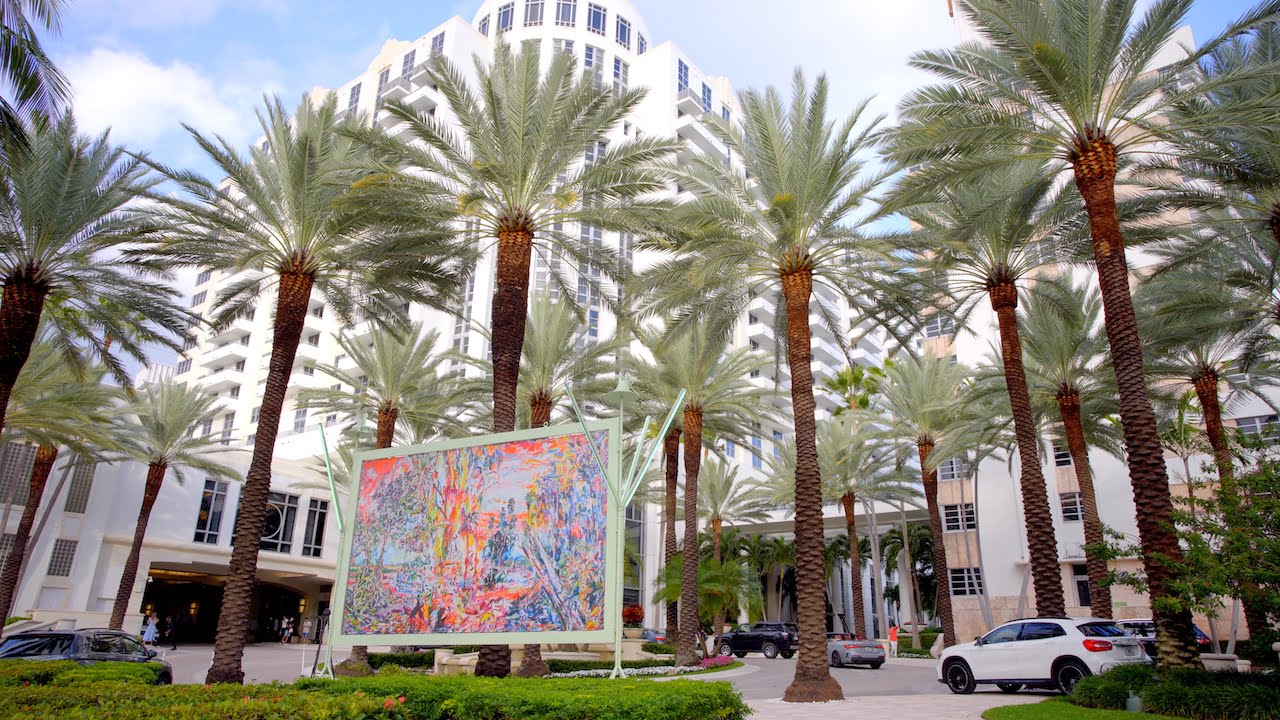Kim Heirston, an esteemed private art advisor, has worked at some of the biggest galleries and represented world-famous artists. That pedigree means that she has been attending Art Basel Miami since its humble beginnings over two decades ago, and she has seen it evolve from a small art fair to a global phenomenon. For PALMER, Heirston reflects on how the event has evolved alongside the rapidly changing industry and shares some of her fondest memories attending the shows.
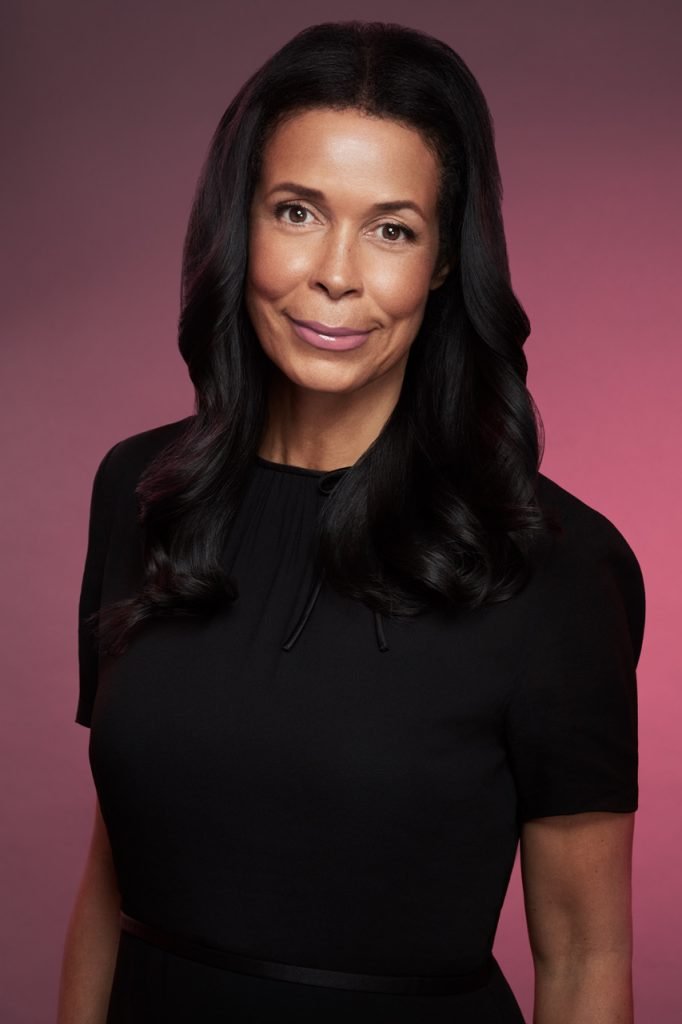
Kim Heirston. Photo: Ylva Erevall/Courtesy
There is something so comforting about the consistency of Art Basel Miami. When you walk into the fair, there is Helly Nahmad Gallery to the left, Karsten Greve to the right, bookending the very centrally located Acquavella galleries. For this New Yorker, it’s a bit like emerging onto 5th Avenue from the southern end of Central Park. There is the Plaza, the Sherry Netherland, Bergdorf’s. These edifices are architectural anchors like the triumvirate of galleries just off the Miami Convention Center’s Hall West B.
This year, my vote for the most impressive work at the fair — which also happened to be the most expensive — was Andy Warhol’s black-and-white SELF PORTRAIT (FRIGHT WIG) from 1986. The painting, installed under white letters that spelled out Acquavella, hovered over the gallery’s massive desk that always seems to signal serious business. At one point, I had the sudden urge to run my fingers through the dense gray, neatly manicured locks of Bill Acquavella. Seeing Bill in the booth, it suddenly dawned on me how much the dealer actually looks like a better-looking younger brother of Andy.
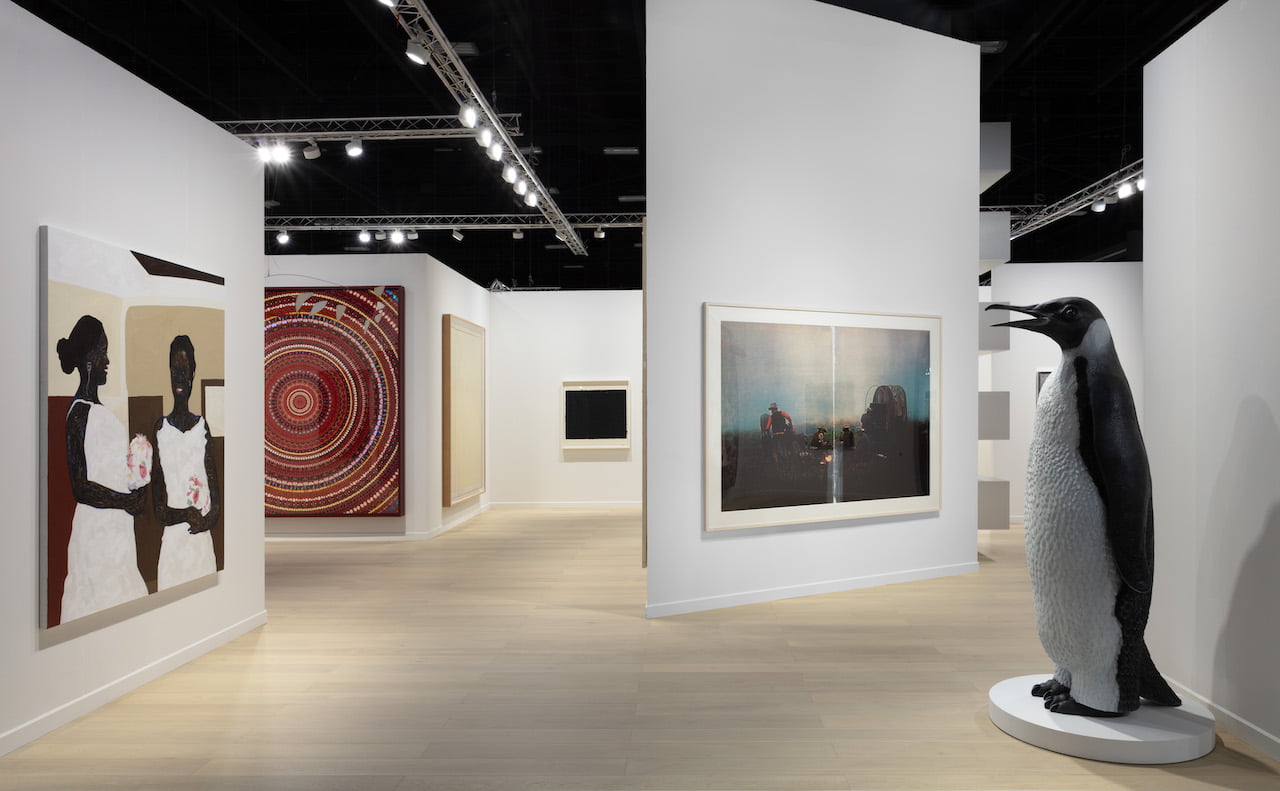
A scene from the Gagosian’s 2022 installation. Photo: Courtesy
Twenty-one years ago, Art Basel began as a whimper. On October 7, 2001, the United States went to war in Afghanistan. Clyde Haberman wrote the next day, in The New York Times, “And so it began. With long-range bombers and cruise missiles, the anticipated attack on Afghanistan got under way, the goal being to destroy Osama bin Laden’s terrorist training camps and to get rid of his Taliban protectors. ‘Now the Taliban will pay a price,’ President Bush said…”.
The first Art Basel Miami paid a price, too. It didn’t happen. I was there though, having flown down to meet with friends and clients, clearly of the mindset that the show must go on. At that time, it was a very mom-and-pop hodgepodge of gatherings. There was no Margulies Collection at The Warehouse. We went to his home, and ogled his treasures close-up and in person. I remember wondering how he could stand to have all of these strangers in his house.
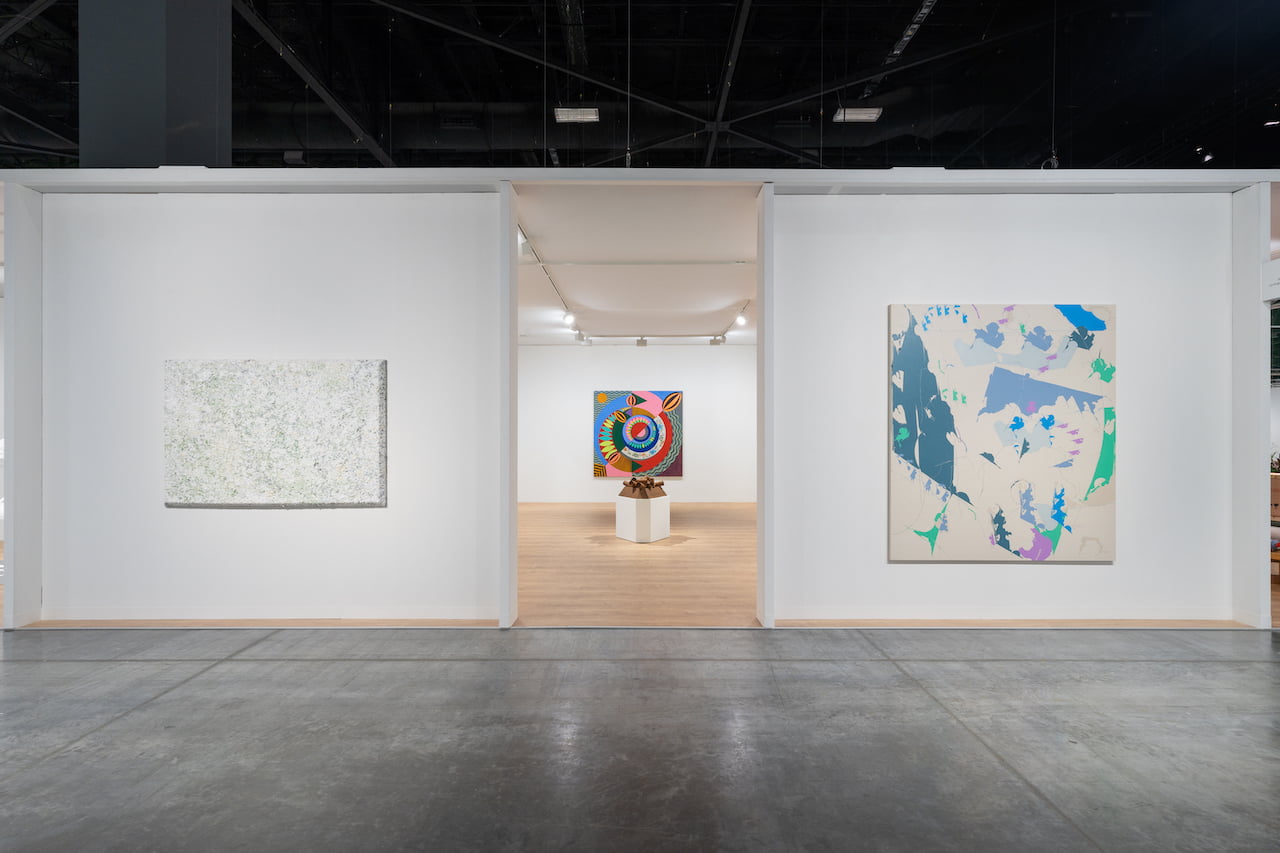
Installation view of Pace at Art Basel Miami, Booth #F13. Miami Beach Convention Center, Nov. 29 – Dec. 3 2022. Photo: Courtesy Pace Gallery
Nearby, also in Key Biscayne, was the modern manse of Rosa and Carlos de la Cruz. It was really an art complex, with a wing dedicated to her delicate floral curtain by Jim Hodges, dazzling hand-blown glass figures by Jorge Pardo, and her hanging single strand of light bulbs by Felix Gonzales-Torres. There were paintings by Sigmar Polke, as well as works by José Bedia Valdés and Ana Mendieta. I was enthralled by the collection, and Rosa, whom I came to see as an angelic fixture in our world. This was a woman who treasured her art, but she treasured those who made it even more. As a young professional, her influence on me was profound. School taught me that art was to be analyzed. Gallery life taught me that art was to be sold. Rosa taught me art was to be worshiped.
The de la Cruz house party of yesteryear was a sprawling outdoor setup with miles of food and thumping music, with an interesting, international mix of guests, and always, always, artist-centric. The vibe was familial and relaxed. My friend, the model Veronica Webb, remembers her daughter playing amongst string sculptures by Mexican artist Pedro Reyes.
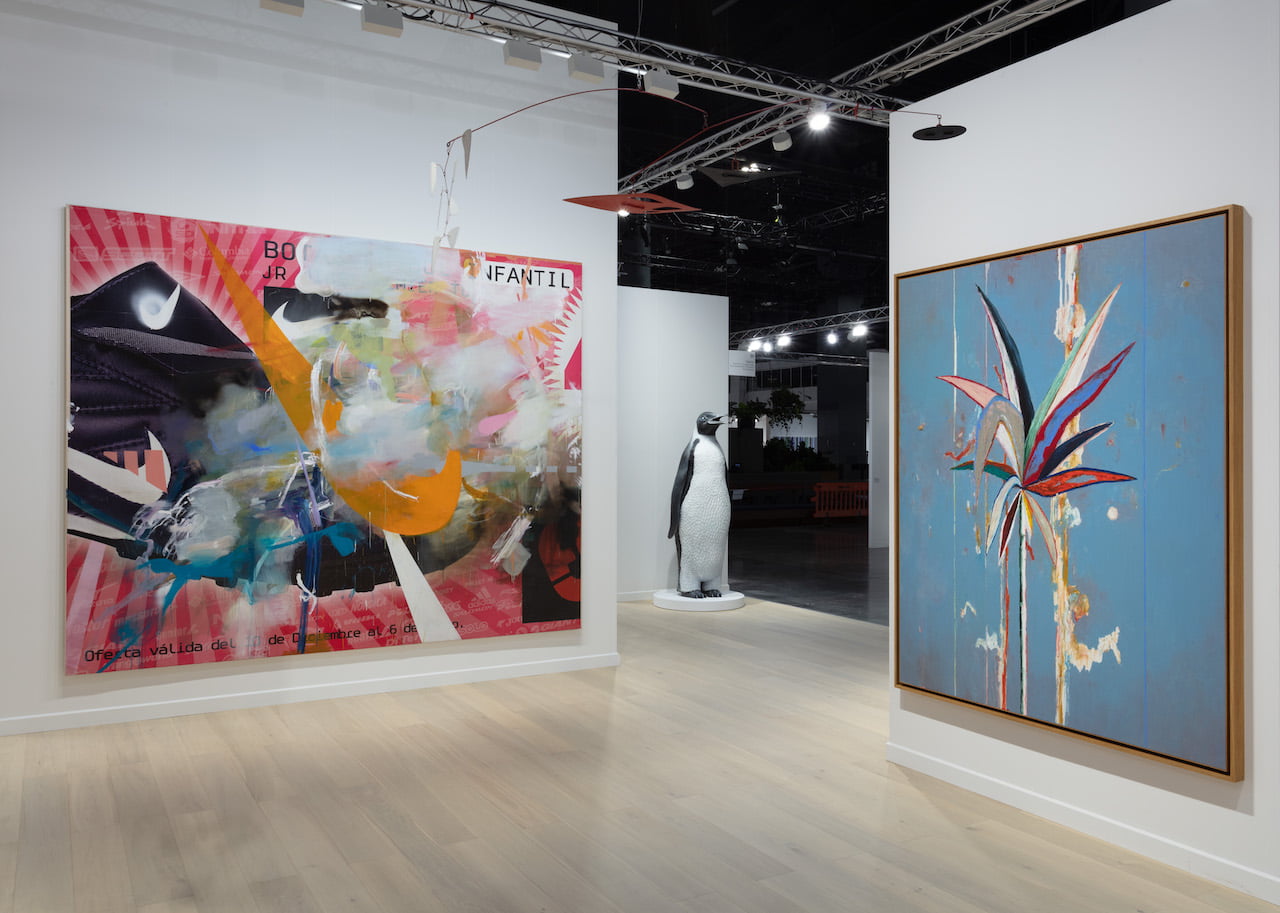
A scene from the Gagosian’s 2022 installation. Photo: Courtesy
This year, as I sat nibbling on the best cacio e pepe I’ve ever tasted, I took in the scene at Casa Tua. Gagosian had taken over the restaurant and garden oasis. Audrey and Martin Gruss were seated at my end of the table, looking regal and utterly engaged in the happenings. At the other end was Edythe Broad and Broad Museum Founding Director, Joanne Heyler, as well as my buddy, Deborah McLeod — a friendship born many years ago when I was a young director at Stux, and she, my equivalent at L.A.’s Blum Helman. We have known each other for over 30 years, yet had only recently managed a 45-minute breakfast at the Carlyle this auction season.
That is often the way of art-world friendships: long in duration, short on actual connection. As Deborah sat there making sure the grand dame Broad was tutto bene, I thought about all Edie had seen over the years. I wondered what her life might be like now, without her art-titan husband, Eli. Surely, the world felt different. As the widow of such a powerful man, did she sense her profile diminished? Or did she feel empowered, even liberated? I am guessing it is the latter. Now, she can be the queen.
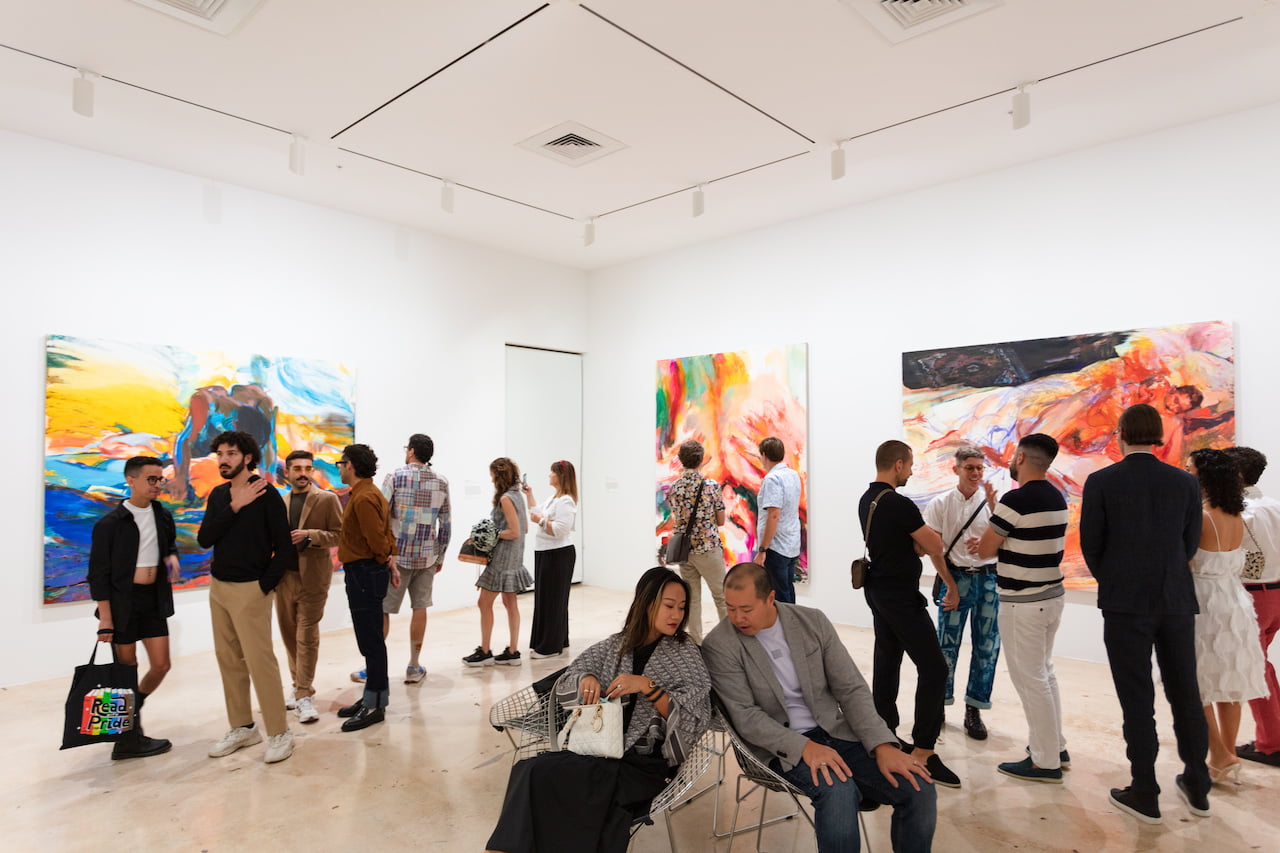
Doron Langberg at the Rubell Museum. Photo: Courtesy
After the Gagosian dinner, I made my way to Soho House for the annual White Cube affair. This year, Kelis was meant to perform. I’ll never forget the year that I didn’t make the trek, and wound up missing out on Chaka Khan. The minute I hit the beach tent, I headed for the dance floor, to burn off a little pent–up energy with Yvonne Force. Yvonne and I go so far back. Together, we have seen so many Art Basels and Venice Biennales. Being in her flamboyantly fabulous presence is always a party, as well as a trip down memory lane. Amongst our shared Miami highlights: Nadja Swarovski’s annual seated dinners on the beach; Aby Rosen’s annual W Hotel fêtes with after-parties at The Wall; the early Artsy Artist Dinners hosted by Dasha Zhukova.
Between 2006 and 2008, Miami reached a peak, what Roberta Smith would describe as “Baselmania.” I knew things had gotten a bit off-kilter when my husband was roofied by a posse surrounding Tony Shafrazi and Sean Penn. While on the subject of sex and drugs, let me not forget the Coachella/Glastonbury aspect of Miami Art Week. I have seen the Scissor Sisters, Iggy Pop, Miley Cyrus (all courtesy of a generous Jeffrey Deitch), Madonna, Duran Duran, Lenny Kravitz, Drake, and, last year, Alicia Keys and Lizzo. The music is reason alone to mecca to Miami.
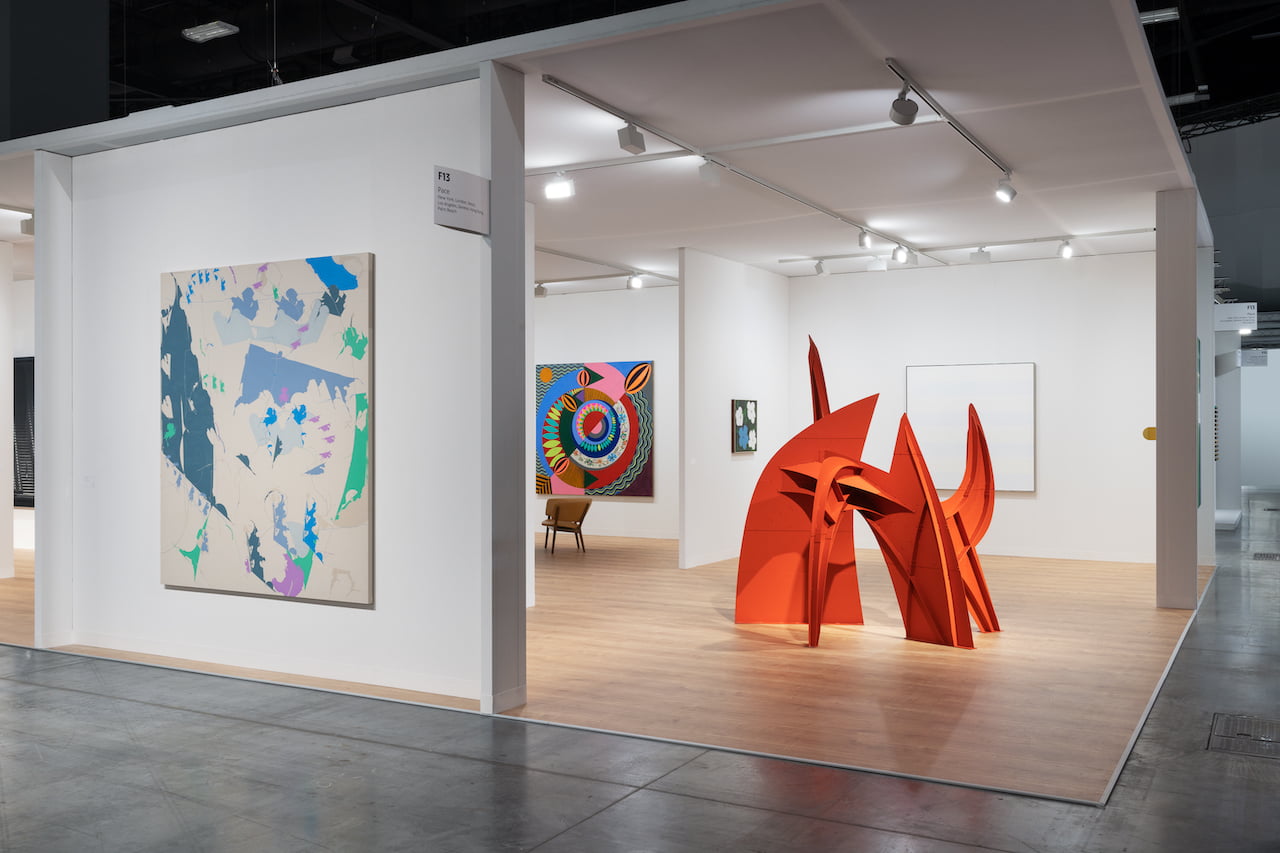
Installation view of Pace at Art Basel Miami, Booth #F13. Miami Beach Convention Center, Nov. 29 – Dec. 3 2022. Photo: Courtesy Pace Gallery
Some of the obvious examples of the fair’s evolution: In 2002, Art Basel hosted around 150 galleries. In 2022, it accommodated 282. Back then, the main sponsor was UBS. It still is. Nearly a generation ago, the visionary Sam Keller conceived of Art Basel Miami, while Marc Spiegler oversaw its adolescence and adulthood. Compared to today, it was a scrappy affair. Remember the containers? These were the industrial shipping pods refitted as art display gallery “booths” situated on the beach. The section was euphemistically called Art Positions. However, it all felt radically new. I remember being so excited to be there. Most memorable was an installation by Aaron Young, then represented by Harris Lieberman. He turned one container into a giant hourglass, with sand dripping through a small hole, continuously filling the empty vessel.
Today, Art Basel Miami is run by a staff of nearly 120 people. Two decades ago, the team consisted of about 25. Back then, there were hardly any satellite shows. Art Miami had already been around. ACQUA took place at a hotel, like the Gramercy International Art Fair, which morphed into the Armory Show. NADA, the best satellite, moved from neighborhood to neighborhood, then migrated to the Deauville Hotel in North Miami Beach, and is now at the Ice Palace. At the fair’s peak, there were actually 20 satellite fairs: today, only seven or eight remain.
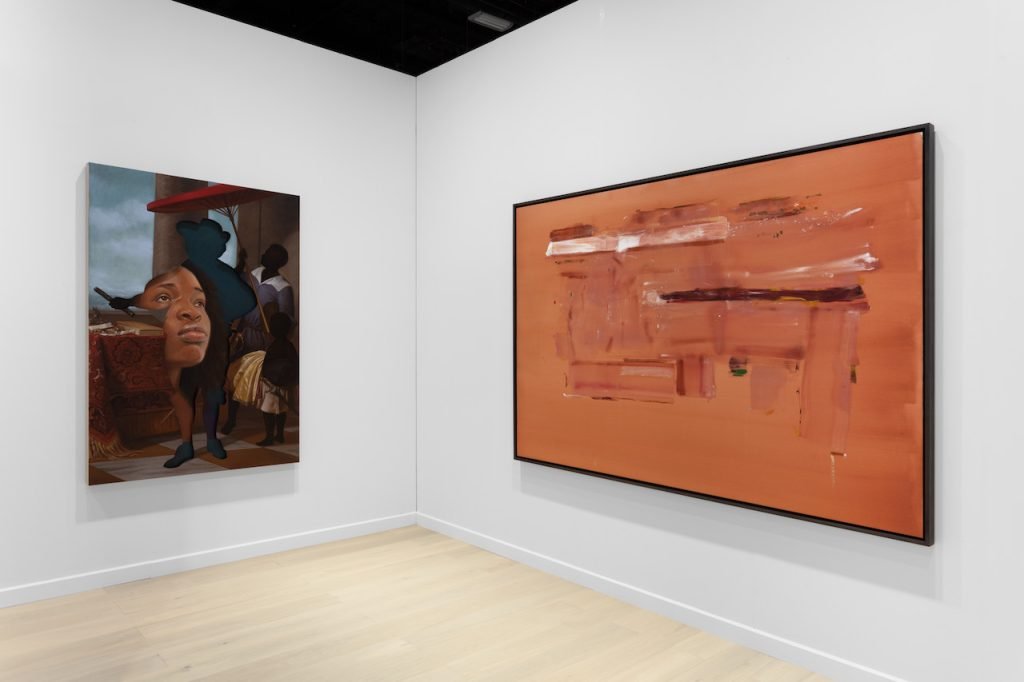
A scene from the Gagosian’s 2022 installation. Photo: Courtesy
Once upon a time, there was virtually no luxury shopping other than the Bal Harbour Mall. There was no downtown Dior or Chanel. No Wynwood. That was the brainchild of Craig Robins, who worked to develop Miami in fits and starts. While we’re on the subject of changes, in 2001, the average price of a high-end hotel room was about $500. Now, the average is about $1,200, easily.
In the good old days, there were more masterpieces. I once bought a Lee Krasner from the coveted Earth Green series in 2004 for $1,200,000 (the painting resurfaced on the market bearing an asking price of $12,000,000). In 2006, I managed to snag a gorgeous Cy Twombly 1962 Roma painting from Karsten Greve for a relative song. There was also the grisaille Picasso of Françoise Gilot that I acquired for clients from the extraordinary Picasso booth of the late dealer Jan Krugier. We call it the Patient Picasso. It took nearly a year between the time my clients laid eyes on the painting, at the fair, and the time they decided to buy it.
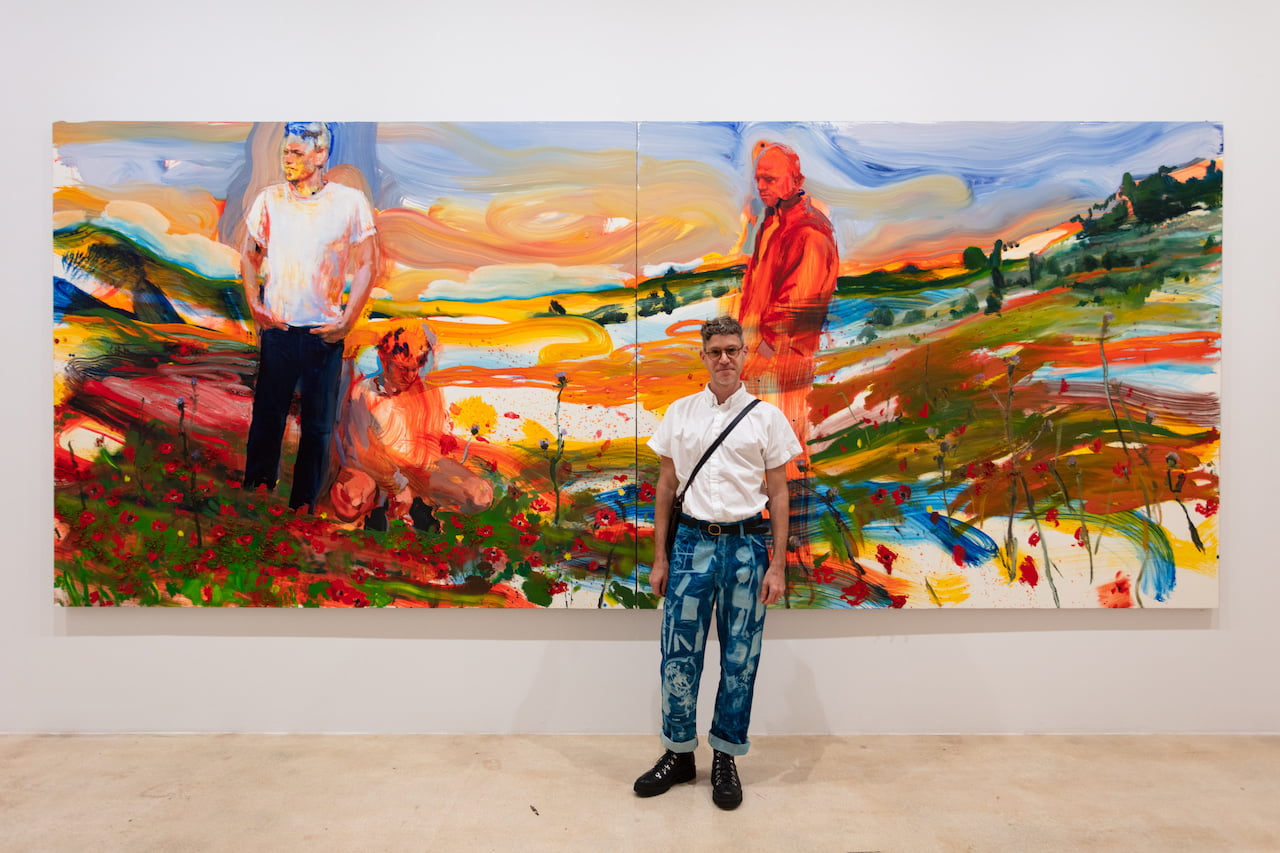
Doron Langberg at the Rubell Museum. Photo: Courtesy
Nowadays, it’s very much about the now, with countless offerings executed by artists born after I graduated from university. And on many, the jury is still out. Having said that, at the Victoria Miro booth I was absolutely transfixed by a landscape by the artist Doron Langberg, who was born in—you guessed it—1985. I was aware of the name but realized that this was one of the artists included in the Rubell’s wonderful exhibition this year.
The art world picks up a challenge faster and more furiously than just about any other sphere of influence—maybe with the exception of the music industry. It puts a spring in my step when I walk into booths like Gagosian, Pace, and Hauser & Wirth and see bold, beautiful works by Black, and women, artists: Rick Lowe, Mark Bradford, Pat Steir, Helen Frankenthaler and Lynne Mapp Drexler (I bought my second in the last month). I am proud when I hear $500,000, $1,0000,000, $2,000,0000, $3,000,0000 for these artists. Hauser & Wirth, by the way, installed 26 works, five of which were created by white male artists, including George Condo. The booth was beautiful and soulful and majestic.
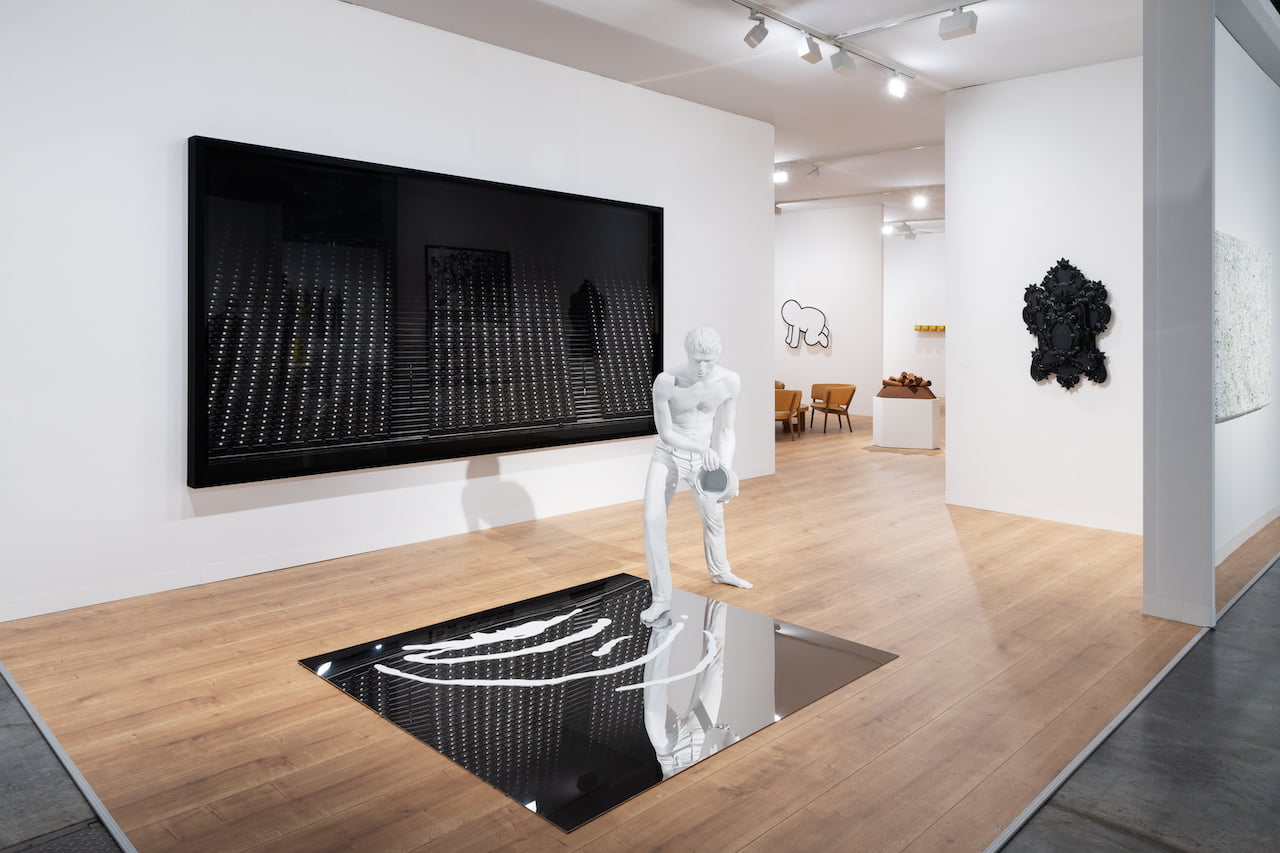
Installation view of Pace at Art Basel Miami, Booth #F13. Miami Beach Convention Center, Nov. 29 – Dec. 3 2022. Photo: Courtesy Pace Gallery
Hauser & Wirth, a powerhouse European, NY-based gallery, showed works by Lorna Simpson, Allison Katz, Louise Bourgeois, Cindy Sherman, Jenny Holzer, Camille Henrot, and Nicole Eisenman. They brought Charles Gaines, Rashid Johnson, Glenn Ligon, Jack Whitten and my friend Gary Simmons, and Henry Taylor, with a charming diptych of the Obamas. Talk about throwing down the gauntlet. The presence of women and artists of color made this booth, indeed this fair, feel centuries away from 2001. Nothing, and absolutely everything, has changed.

